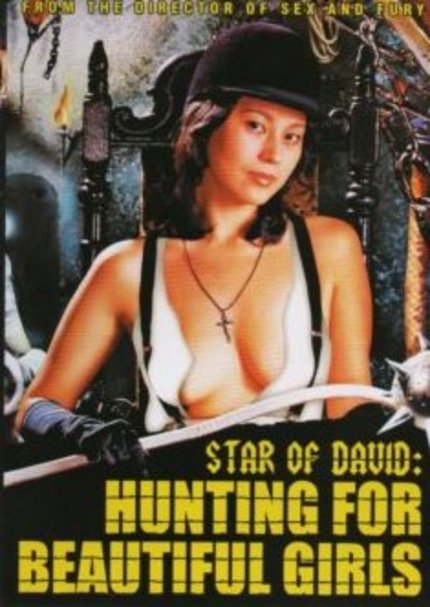DVD Review: Norifumi Suzuki's STAR OF DAVID

Norifumi Suzuki directed some of the more infamous Toei Pinky Violence including Sex and Fury (1973) and School of the Holy Beast (1974). Suzuki eventually hopped over to Nikkatsu while the company was still knee deep in roman poruno. This, in 1979, Nikkatsu released Suzuki's Star of David: Hunting for Beautiful Girls (Dabide no hoshi: Bishôjo-gari). Star of David, which was written by Jiku Yamatoya based on Maasaki Sato's manga, coats the usual Nikkatsu mix of sex and violence with thick layers of De Sadean philosophy, haphazard religious symbolism, and black humor. The result is a nihilistic bloodbath that is equal parts absurd, clever, and offensive.

One stormy evening, a serial rapist named Hirukawa pays a fateful visit to the home of a lecherous professor and his wife. Months later, the professor's wife bears a son named Tatsuya. The professor, who knows Tatsuya is not his kid, treats him miserably. Tatsuya's mother kills herself, leaving the boy to be raised by the father. Tatsuya the boy grows into Tatsuya the psychopath, and his real father's passion for mayhem and murder lives through him. Tatsuya kills the professor and inherits the family's gigantic home. He installs a torture chamber in the basement, and then goes on a misogynistic spree of killing and torture fueled by a pornographic obsession with Nazis, Nietzsche (a copy of Ecce Homo is shown in Tatsuya's room) and the Story of O. His bone-headed philosophy of evil, which is ridiculously linked to the Star of David, is only tempered by his attraction to a damaged childhood friend.
Star of David is most definitely well-made and directed; Suzuki was a seasoned professional with extensive studio experience. The trick with the movie is that it features a blend of material that doesn't necessarily gel together. The commentary and interviews suggests there is a cultural context here that causes some of the underlying ideas to pass by non-Japanese audiences. On the other hand, the crazy mingling of pornography and Western cultural and religious symbolism suggest that the material and Suzuki's handling of it shouldn't really be parsed for any deeper meaning. The film boasts a heavy dose of philosophizing but any seriousness that might have come along with it is diluted by the film's overall absurdity. For example, Bunta Sugawara briefly pops up in a X-rated comedic aside that seems to be a nod to Suzuki's Truck Yaro. In another example, Tatsuya retreats from a large party in his house, and heads to the basement where he ends up covered in enough blood to fill a paint bucket. However, he emerges sparkly clean from his lengthy disappearance. As is often the case with Nikkatsu titles of this era, the sexual content is explicitly linked with violence against women. This is par for the course, but the philosophical justifications for all the sadism make it harder to swallow than usual. In fact, there is at least one scene that seems real and just a bit dubious.
As to technical specs, the film is presented in 16:9 anamorphic widescreen with Japanese audio and English language subtitles. The double-sided DVD cover insert features both censored and uncensored versions of an image from the film's original poster art. The extras include an interview and audio commentary with Suzuki, which are fairly essential in getting a real sense of what Suzuki was trying to achieve. Even with the aid of the background materials, its a bit hard to get a read on where Star of David: Hunting for Beautiful Girls was really coming from. Whatever the case, Suzuki's film is an interesting example of how far Nikkatsu was willing to take roman poruno.







